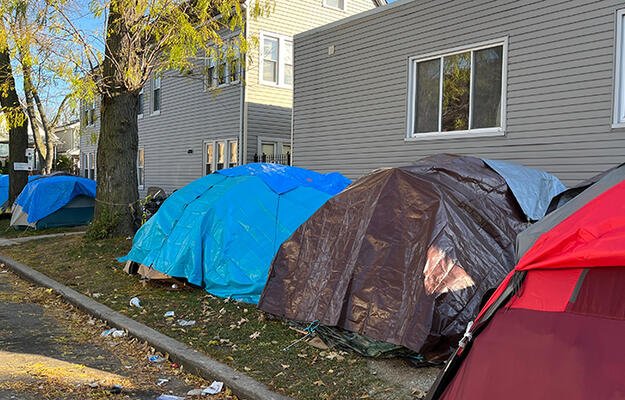
TOD for Equitable Housing in Suburban Chicago and Beyond
- Title:
- TOD for Equitable Housing in Suburban Chicago and Beyond
- Author:
-
Brendan Saunders, Kyle Smith, and Sofia Becker
- Source:
- Publication Date:
-
2014
Transit-oriented development (TOD) provides opportunities for incorporating affordable housing in accessible and vibrant places. Quality of Life, (e)Quality of Place, a report by Open Communities and the Center for Neighborhood Technology (CNT), examines why and how to increase affordable and mixed-income TOD in the Chicago area, particularly in the northern suburbs. The authors propose equitable TOD as a means of complying with the affordable housing development goals in the state’s Affordable Housing Planning and Appeal Act (AHPAA) and HUD’s Affirmatively Furthering Fair Housing rule. The report includes brief examples of replicable policies and practices from Charlotte, NC; Somerville, MA; San Leandro, CA; Arlington County, VA; Portland, OR; Denver, CO; Arlington Heights, IL; and Highland Park, IL.
Major findings:
- In Chicago’s northern suburbs, rail transit stations, from both Metra and the Chicago Transit Authority (CTA), anchor downtowns and drive economic development. However, equitable growth in these communities is impeded by high costs of housing and transportation for moderate-income households and a dwindling supply of affordable rental housing near transit stations.
- Housing and transportation consume more than 56% of income for moderate-income households in Chicago’s northern suburbs.
- While nearly 35,000 rental units were added in the northern suburbs, the areas near Metra and CTA stations saw a decrease in rental units and an increase in owner-occupied housing.
- In 2012, less than 20% of federally subsidized apartments in the northern suburbs was near a CTA or Metra station.
Policy recommendations:
- Implement density bonuses and reduced parking requirements to incentivize the creation of affordable units in new housing developments.
- Target or create financing and acquisition programs to facilitate affordable TOD. Options include strengthening the TOD connection for existing resources, such as the Low Income Housing Tax Credit, in the state, as well as creating new resources for addressing affordable TOD barriers, such as community land trusts, affordable housing trust funds, and other land assembly funds.
- Coordinate state and regional infrastructure investments with high-quality, mixed-income TOD.
- Improve the fair housing aspects of TOD through affirmative marketing, multilingual management practices, universal design, and inclusive methods for establishing applicant preferences.
- Focus on community engagement to increase the acceptance of mixed-income and affordable TOD proposals.


